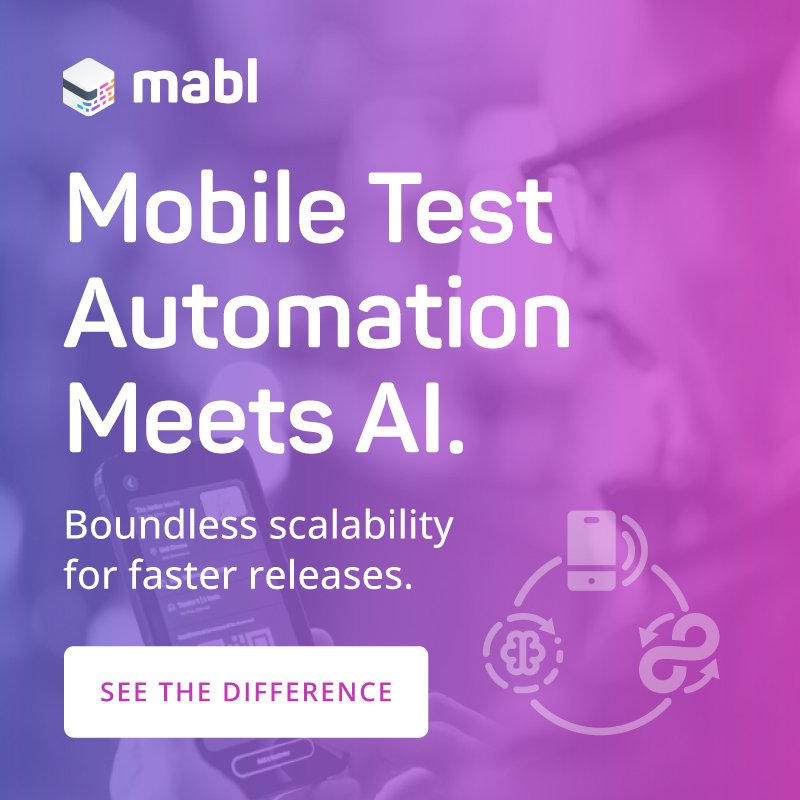How to hire top technical talent
Monday, October 28, 2019

|
Richard Harris |
Maria Chung, VP of People at HackerRank talks about HackerRank, the technology hiring platform that is the standard for assessing developer skills, enabling tech recruiters and hiring managers to hire skilled developers and innovate faster.
We recently spoke with Maria Chung, VP of People at HackerRank about hiring technical talent. HackerRank is a technology hiring platform that is the standard for assessing developer skills for over 1,500+ companies around the world. The current methods for technical interviewing fall flat when it comes to showcasing a candidate’s true skills. By enabling tech recruiters and hiring managers to objectively evaluate talent at every stage of the recruiting process, HackerRank helps companies hire skilled developers and innovate faster.
ADM: Tell me about HackerRank – what is the company’s mission and what problem are you trying to solve?
Chung: “The biggest companies in the world often talk about a “technical skills gap,” but companies are simply not looking in the right places, or in the right ways. HackerRank was founded to help businesses reimagine their hiring pipeline by removing the resume from the process. With HackerRank, customers attract and hire top technical talent based on skills, not pedigree—a simple mission, but one that has a profound effect on the workforce. By removing the resume from the hiring process and focusing on actual skills, our customers—like Goldman Sachs, Stripe, Atlassian and LinkedIn— can ensure they are hiring the candidate that is best suited for the job, no matter their background, education or experience.”
ADM: Why is it so hard for companies to hire good technical talent?
Chung: “There are a few reasons for this. You have Big Tech companies like Amazon and Google hiring tens of thousands of workers at one time, and their offer and brand is attractive to job-seekers, so it can be difficult for startups and smaller companies to compete with those brands.
“At the same time, companies are often restricting their own talent pool, looking only for talent that comes from better-known universities. This limits your candidate pool, creating a homogenous workforce and overlooking top talent around the world.
“Another major issue is that the current methods for technical interviewing fall flat when it comes to showcasing a candidate’s true skills. Let’s say you’re hiring a front-end engineer – most companies will put them through a whiteboard test or ask candidates to solve brainteasers – none of which actually matches the work that the developer will be doing in their new job.
“Whiteboard tests are ubiquitous in coding interviews, but they are a poor indicator of skill, taking the candidate out of their comfort zone and failing to replicate the actual job environment. In the end, you’re more likely to hire someone who’s good at taking tests, rather than someone who’s actually cut out for the job.”
ADM: What should companies do to better attract top technical talent?
Chung: “There are many simple steps companies can take to optimize their process, but the following are two simple, effective ways to quickly improve your process:
Look beyond the resume. Far too often, companies prioritize things that don’t directly correlate to success on the job – from the school a candidate graduated from, to whether they’ve worked at a brand-name company like Amazon or Google. These restrictions limit and homogenize your talent pool, a clear negative for any company looking to have a diverse and inclusive workforce and succeed.
Tailor the hiring process to the role being hired for. A data science candidate requires a totally different set of skills than a full-stack engineer – so why would a company put them through the same testing process? Removing whiteboard tests and providing candidates with assessments that mimic the environment of the role they are interviewing for, ensures that the candidate’s skills will shine through.
“These tweaks not only improve candidate experience, but they also ease the hiring process for companies – hiring managers don’t need to guess at whether a candidate can do what the role requires, leading to quicker processes and more effective hiring.”
ADM: Why is D&I so important to keep in mind when hiring?
Chung: “It comes down to a few different things. First, creating a level playing field for everyone is simply the right thing to do. A variety of perspectives, approaches, backgrounds, and races make us better colleagues, and our work richer.
“Keeping D&I in mind can also improve a company’s hiring and retention. A recent survey found that 63% of Gen Z feel it is most important to work with people with diverse education and skill levels, and 77% of Gen Z said that a company's level of diversity affects their decision to work there.
“Lastly, D&I has a direct impact on the bottom line. Even small changes to the makeup of a company’s leadership team can have a profound impact on profits, and companies with above-average diversity on their leadership teams report far higher innovation revenue, the Boston Consulting Group found. And a report from McKinsey found that failing to consider D&I can have grave consequences, concluding, ‘overall, companies in the bottom quartile for both gender and ethnic/cultural diversity were 29% less likely to achieve above-average profitability than were all other companies in our data set.’”
ADM: What is the current state of D&I in the tech industry?
Chung: “In short, we’re struggling. The number of computer engineering degrees earned by students who are of Hispanic, Black, or Asian descent as well as students who hold multi-racial identities grew 94% from 2011 to 2016; yet, the number of racial minorities in technical roles has increased at a fraction of that rate. Moreover, there are many individuals from non-traditional backgrounds who have the technical skills companies are looking for: an estimated 20,316 people who graduated from coding boot camps in the United States in 2018. This data reiterates that while the “pipeline problem” is a myth, only candidates of select, dominant backgrounds are making it through the door — confirming that current hiring practices are excluding large swathes of talent.
“All that said, there are a number of leaders working to change that. You have D&I professionals like Aubrey Blanche at Atlassian, who has developed a model for how companies can bake D&I into every part of their company, and CEOs like Jeff Lawson of Twilio are outspoken supporters of underrepresented minorities. Google has brought their total number of minority employees up 7% since 2014, a number that sounds small at first but is actually incredible when you remember they have over 100,000 employees.”
ADM: Tell me about HackerRank’s Diversity and Inclusion Center – what capabilities does it provide and why are those important?
Chung: “We’re really excited about this Center – it enables our customers to get the ball rolling on D&I, and easily incorporate some best practices into their hiring processes. We see ourselves as a force multiplier here – we have over 1,500 enterprise customers, including some of the biggest names in the world, and working with them gives us the opportunity to enact positive change across the industry. Right now, the Center enables companies to do the following:
Root out unconscious bias – programmatically: Employers will now be able to anonymize much of the recruiting process to prevent unconscious bias from seeping in. Hiring managers can now hide candidate identity in assessment reports from interviewers in CodeScreen and CodePair to ensure unbiased evaluation, and make CodePair programming sessions anonymous to further remove unconscious bias from the hiring process.
Provide an inclusive interview experience: The Diversity and Inclusion Center empowers employers to modify specific testing parameters so candidates of all ability levels can showcase their skills. Recruiters and hiring managers can provide custom time accommodations on assessments and projects for those with special test-taking needs.
“Anonymizing candidate identity and providing accommodations for candidates with impairments are incredibly easy yet effective steps that any company can take. Not only do the practices help to deter the unconscious biases that we all have, they push candidate skills to the forefront, ensuring that hiring managers are assessing candidates based on their work, not their identity.”
ADM: What kind of technical roles can this be applied to?
Chung: “These tools can be used to hire developers of all kinds – front-end, full-stack, back-end, and DevOps, as well as data scientists.
“More broadly, the spirit of the features in our D&I Center (like anonymizing candidate identity markers) can be replicated at any organization looking to better operationalize D&I.”
ADM: What else can companies do right now to integrate D&I considerations with their hiring process?
Chung: “Here are some actionable ways to move in the right direction:
Train your hiring managers to look beyond “culture fit”: Hiring for “cultural fit” leads to everyone in the workplace looking, thinking and doing the same because “culture fit” is often a code word for “someone you’d want to have a beer with.” That’s not an inclusive lens for hiring.
Standardize your hiring process: If you don’t measure people against the same technical bar, you’ll end up focusing on things that won’t have an impact on their success, like the school they went to or the beer they like to drink. Standardizing your process and presenting each candidate with the same playing field places the focus squarely on their skills, and ensures that companies are hiring the person that best fits the role.
Offer flexible schedules and remote work opportunities: In this tight labor market, companies need to expand their search out of major metropolitan areas, especially as the cost of living in cities like NYC and SF continue to rise. Offering remote work options or other flexible schedules gives candidates of all backgrounds and upbringings the same job opportunities as those based in major economies or those that are able to work fixed schedules.”
ADM: What do you think is the future of D&I in hiring? Will companies further integrate tools and best practices?
Chung: “While progress on diversity and inclusion has been slow, the future is very bright – I expect more companies will take action to make their hiring processes fairer, and general awareness around concepts like unconscious biases will become more common. What we’ll need to watch out for is the possible unintended consequences of the hiring tools we create such as potential bias in AI tools.
“Achieving true equality is not a quick process or a linear one -- but if the tech industry commits to making hard changes, we can make a powerful impact.”
About Maria Chung
Maria Chung, VP of People at HackerRank. As the VP of People, she oversees the people's operations functions–this includes building the hiring infrastructure and facilitating programs that support company growth.
In the competitive tech hiring space, Maria has seen organizations shift their hiring strategy from a one-sided evaluation process to a two-way exchange. Developer hiring processes are no longer centered around qualifications and past experience; now, recruiters have to be prepared to sell the role and tech talent brand in order to land top candidates. Understanding this shift was a big driver behind her success in growing tech teams in her previous role at Verb Surgical.


Become a subscriber of App Developer Magazine for just $5.99 a month and take advantage of all these perks.
MEMBERS GET ACCESS TO
- - Exclusive content from leaders in the industry
- - Q&A articles from industry leaders
- - Tips and tricks from the most successful developers weekly
- - Monthly issues, including all 90+ back-issues since 2012
- - Event discounts and early-bird signups
- - Gain insight from top achievers in the app store
- - Learn what tools to use, what SDK's to use, and more
Subscribe here














